Making TECH accessible
It’s 25 years since Caci launched onto the beauty market. Amanda Pauley talks to MD Dean Nathanson about the evolution of the brand and the key challenges facing the industry
Brand View

Dean Nathanson now
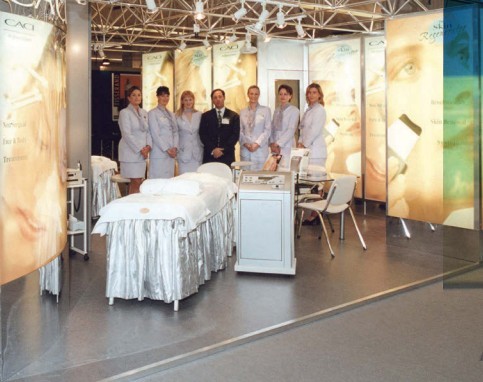
The Caci team at a trade beauty show in Brighton in 1997
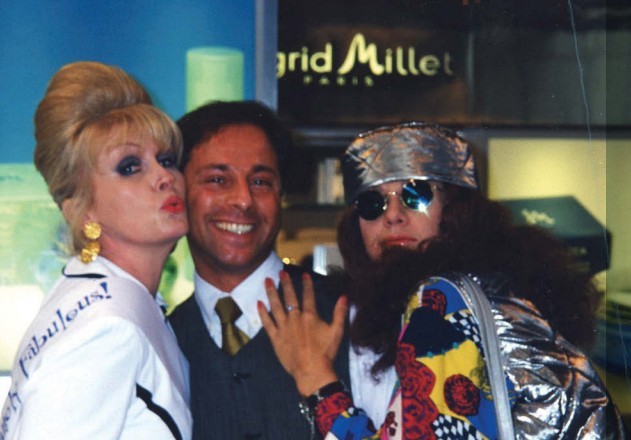
Nathanson with the Ab Fab stars at Professional Beauty in 1997
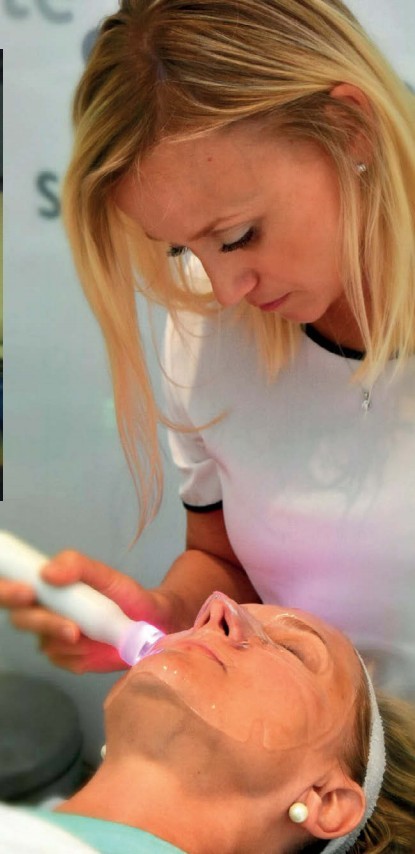
Demonstration of Caci’s Synergy lymphatic drainage massage at PB London 2017
As Caci celebrates its 25th year in business, it’s easy to see why the machines brand has become a household name. Stocked in more than 6,000 salons across the UK and having supplied more than 10,000 systems worldwide, its devices have been crucial in making machine-based treatments such a prevalent part of the salon experience we know today.
“When we started 25 years ago, beauty salons were a place where people that had money would go to be pampered. Now, those from all walks of life visit salons and are much more concerned with corrective and results-based treatments, and it’s because the consumer is better educated,” says managing director Dean Nathanson.
The Caci device, designed by Dr Wing, launched in 1992 as a muscle-stimulation cosmetic treatment system for beauty salons and its concept of the non-surgical facelift was well received, with the company turning over more than £1m in its first year.
“The timing was right because people were looking to offer something different. In 1994, when it was revealed that Princess Diana had a Caci treatment, it opened doors all over the world,” says Nathanson.
Now the company has five machines, the newest being Synergy, which uses SPED (simultaneous photo electrical delivery) tech to deliver high-intensity LED photo stimulation at the same time as microcurrent to target the underlying muscles and skin tissue, resulting in quicker and longer-lasting results. Nathanson believes “it’s the next generation of microcurrent technology”.
Changing times
But treatment delivery and greater consumer awareness aren’t the only things that have changed over 25 years. Nathanson tells me that training is now the biggest threat to the industry because some salons are offering treatments without all staff being properly trained by the parent company.
“Unfortunately, some cut corners by training staff in-house,” he says. “Therapists are treating human beings, so they need to know what they’re treating them with. Plus, if they haven’t been properly trained, are they covered by their insurance?”
The company is championing the idea of an official industry register so members of the public can see if the therapist conducting their treatment has been properly trained, but Nathanson admits this could take a while. He also wants salon owners to be warier of the rise in cheap devices launching on the market.
“I’ve seen a lot of machines imported from overseas that have no real safety standards and have jumped on the bandwagon of a particular technology, like HIFU (high intensity focused ultrasound), which can do serious damage if it’s not calibrated or used correctly. The same is true of cryolipolysis.”
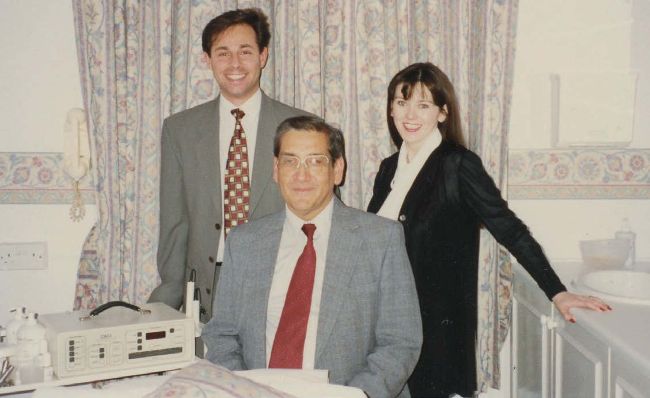
Nathanson at Caci’s HQ in Hampstead in 1994 with Dr Wing’s medical director John Milovich;
Modern issues
With horror stories hitting the headlines, such as clients receiving second-degree burns from fat freezing, Nathanson is urging owners to do their due diligence. “Check out the company, the standards the device has and what the potential dangers would be if you did the treatment incorrectly,” he says.
“You can find out how long someone has been trading for at Companies House for free, or get a full report on the company’s corporate history and financials for just £1.” I also quizzed Nathanson about potential changes to regulations to make it harder for people to import machines.
“Within most of Europe you can supply devices without having to satisfy any standards, even the standard CE mark can just be done as a selfdeclaration,” he says. “Tougher regulations might come post-Brexit and that would be a good thing.”
Future challenges
Nathanson says the beauty landscape is forever changing and will continue to do so, based on the huge changes we’ve already seen in the pound-dollar-euro exchange rates following Brexit. “Companies bringing in goods from the US or Europe have seen their costs rise by around 25%, and those distributors could also, post-Brexit, get hammered with import duties,” he says.
As a British manufacturer, Caci obviously has a vested interest in supporting domestic business, but Nathanson says the alternatives could become unaffordable for salons. “The cost of non-UK manufactured products will increase quite dramatically and beauty salons will suffer because the product houses won’t be able to maintain their prices,” he says.
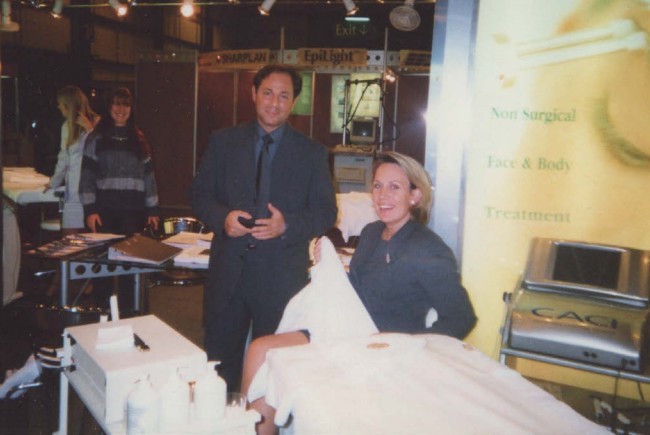
Nathanson and colleague working the Caci stand at a beauty show in 1997
The home devices market is another key area to watch, due to its recent boom: “The big companies are monitoring what’s going on in the salon market and then trying to bring out that tech as a home device for customers. We’ve already seen it with facial toning and IPL hair removal devices, and even more will launch in the future,” says Nathanson.
The next generation
But what will the future hold for Caci? In aid of its birthday, the company announced it’s running a series of special 25-themed offers and working on the development of new treatments for the hands and neck areas, as well as next-generation skincare products “that become enhanced when reacting to the light or electric current we’re delivering [with our machines]”, says Nathanson. The treatments and products are due to launch next year
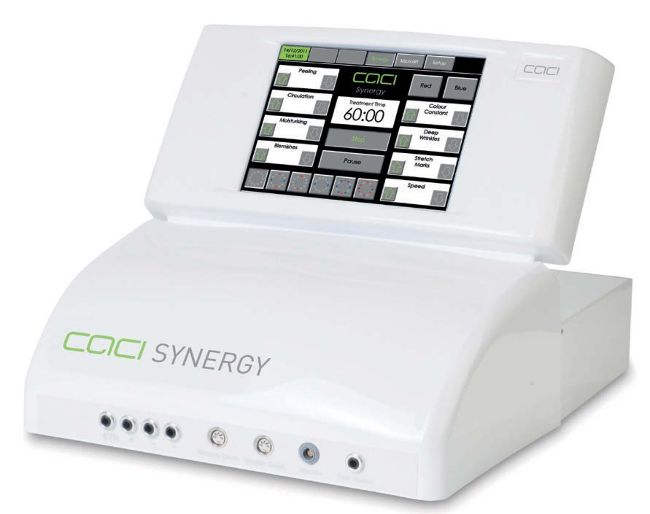
The original Caci machine CACI MK1 and Caci’s most recent machine Synergy, with SPED technology
CACI BY NUMBERS
5
machine models
96
countries supplied
1992
year the company launched
400-500
machines sold in the UK per year
Over 10,000
salon and spa accounts worldwide